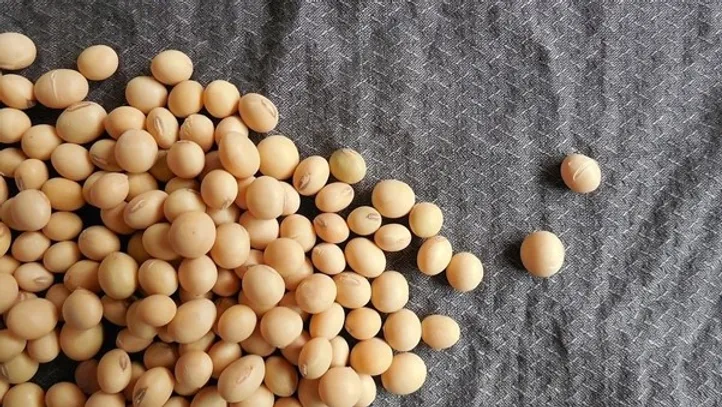In many quarters, the Green Revolution is not considered a great success story and is held responsible for degradation of land, excessive use of fertilisers and chemicals and depleting water table. However, it is GR which has brought food security to India and it is not only wheat and rice that have witnessed its benefits of GR. Soybean is another crop that has risen from nowhere to a major crop of India.
About 30 per cent of India’s population is vegetarian. In Punjab, Haryana and Rajasthan, a majority identifies itself as vegetarian. Soy is a rich source of protein and soy products are seen as a healthy alternative to meat.
Today, India is the fifth largest producer of soybean in the world and in 2022-23, it exported 1.2 million tonnes (mt) of soybean meal.
History of soybean cultivation in India
The adoption of soybean as a crop gained momentum in the 1970s and 1980s with improved varieties and better agronomic practices. The credit for this goes to G.B. Pant University of Agriculture and Technology, Pantnagar and the Jawaharlal Nehru Krishi Vishwa Vidyalaya, Jabalpur who collaborated with the University of Illinois. The preliminary trials of new varieties were conducted in 1965-66. The Indian Council of Agricultural Research (ICAR) launched an all-India project for coordinated research on soybeans in April 1967. Its research centres were located at Pantnagar, Jabalpur and Delhi.
Dr B.B. Singh of the Pantnagar University went to an oil expeller unit, Prag Oil and Rice Mills, Aligarh and motivated them to use soybean as a raw material for the oil plant. Prag was able to extract oil and produce de-oiled cake, with more than 50 per cent protein.
Rest as they say is history.
Profitable crop for farmers
The expansion of area under soybean cultivation was driven by the increasing demand for protein-rich animal feed and vegetable oil. Beside this, it found use in edible oil extraction and animal feed. Soybean meal gained popularity in the poultry, aquaculture, and livestock sectors also.
It has emerged as a profitable cash crop for farmers, especially in Madhya Pradesh, Maharashtra, Rajasthan, and Gujarat. The area under soybean has increased from 30,000 hectare in the 1970s to 12.2 million hectare in 2022-23.
In 1970, India produced only 10,000 tonnes of soybean, which gave a yield of 0.43 tonnes per hectare. By 2022-23 the production has gone up to 14 million tonnes. The productivity levels, however, have not reached a high level and it was only 1.1 tonnes per hectare in 2022-23. In fact, the productivity of soybean in the last ten years has stagnated at about one tonne per hectare. In some years it dropped to 0.8 tonne per hectare (Figure 1).
However, being a commercial crop, it has given good returns to farmers (particularly small and marginal farmers) even though they use minimal agricultural inputs. It finds a ready market in the soybean processing industry. As a result, the farmers in Madhya Pradesh and Maharashtra have taken to soybean cultivation in a big way.
Source: MoAFW, Govt of India
USA leads in soybean cultivation and export
The US is the largest producer of soybean and in 2022-23, it produced 126 mt of soybean. The productivity of soybeans in the US is about 3.5 tonnes per hectare. There, the soybean is genetically modified and the farmers receive large amounts of subsidy which makes the country second largest exporter of the crop in the world. In 2022, the US export of soybean was $34.39 billion.
To improve the productivity and competitiveness of the processing industry, in 2021, Indian Standards for Sustainable Soya (ISSS) were developed by the Soybean Processors Association of India (SOPA), the Indian Institute of Soybean Research, along with the support of key soya industries and businesses. But more consistent efforts and collaboration between SOPA and the state governments are required to breed high yielding and climate smart seeds so that Indian yield of soybean can also go up.
For achieving higher productivity, investment in soybean infrastructure is required, for which the soybean processing industry must play a key role.
In India, the soybean farmers are at the receiving end of climate change as we saw in Maharashtra in 2021 when the harvested crop was damaged in the fields due to late rains in September.
The most important incentive to farmers is to ensure that they receive a fair price for their crop. Due to industrial use of soybean, the farmers have mostly been able to sell their crop at prices higher than the MSP. Figure 2 shows that the wholesale prices of soybean in Madhya Pradesh have ruled above the MSP in the last three years.
Source: Agmarknet
Growing demand for animal feed and export has kept the soybean prices at remunerative levels. A closer linkage between the industry and growers can ensure that farmers continue to receive a remunerative price and soymeal prices remain stable. Farmer Producer Organisations (FPOs) are quite active in Madhya Pradesh and Maharashtra, and they can also help in maintaining price stability.
There is a need for more research on the health benefits of soy on the Indian population. Soybean has the potential to provide nutritional security to the vegetarian segment of the Indian population.
The promotion of soybean as protein rich food needs to be done jointly by the soy industry and the government. The National Egg Coordination Committee (NECC) had promoted the consumption of eggs by highlighting its nutritional benefits through a well-coordinated media campaign. A similar effort is required to promote the consumption of soy products.
Siraj Hussain is a Trustee with the WFP Trust For India and former Union agriculture secretary. Kriti Khurana is a PhD scholar of economics at BITS Pilani, Hyderabad. Views are personal.
